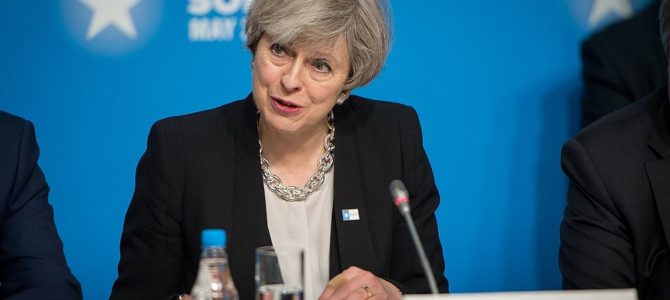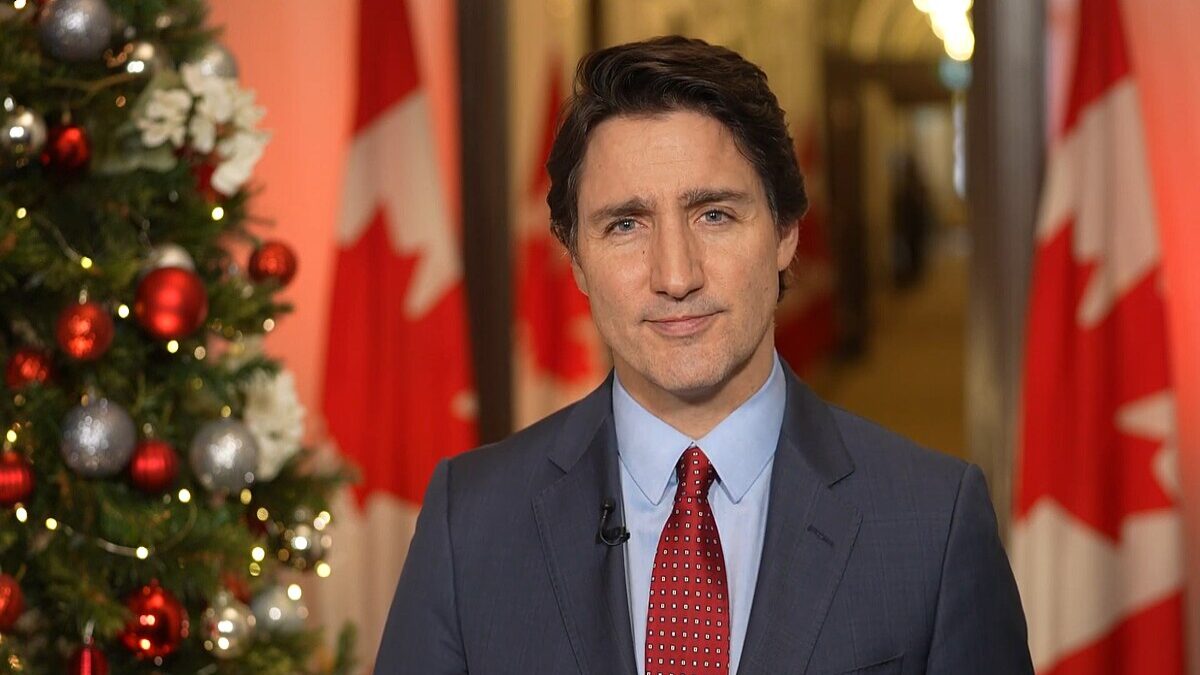
Two-score years ago this month, Britain’s first female prime minister, Margaret Thatcher, won office after winning an election victory for her Conservative Party. Upon entering 10 Downing Street for the first time as premier, Thatcher recited the famous prayer of Saint Francis, asking that “Where there is discord, may we bring harmony.”
Forty years later, Britain’s second female prime minister, Theresa May, faces quite a dissimilar scenario. In an emotional speech on the steps of Downing Street last Friday, May said she would resign the leadership of the Conservative Party effective June 7, giving way for her departure as prime minister once the Tories select a new leader.
During a tumultuous tenure that will have lasted for not quite three years, May was defined by two interlinked issues: Her failure to win an outright majority in the spontaneous “snap” election she called two years ago, and divisions within the Conservative Party—and within the country—on Brexit. The former crippled her premiership, and at present, the latter seem likely to continue well beyond her tenure.
Tory Divisions on Europe
Statistics of her time in office reveal the fundamentally weak position May and her party faced. That includes more resignations in less than three years than either Thatcher or Tony Blair saw in premierships lasting a decade—many of which came over Brexit. It also includes two of the largest parliamentary defeats in the last century, including the largest ever, again over Brexit. At every turn, May tried to plow through the obstacles and setbacks, pledging to “get on with the job,” despite the widespread opposition.
But, like her last three Conservative predecessors as prime minister, divisions over Europe became her undoing:
- In the fall of 1990, Thatcher’s famous triple negative in response to moves to create a federal Europe—“No! No! No!”—prompted her longest-serving Cabinet minister, Geoffrey Howe, to resign. Howe’s resignation sparked a leadership challenge that removed Thatcher from office.
- Thatcher’s successor, John Major, faced a series of revolts from Conservative backbenchers over the Maastricht Treaty, designed to create greater European integration. Major secured Britain’s right to opt-out of the euro and other concessions, but the rebels considered them insufficient. At one point, in a “hot mic” moment Major called members of his own cabinet “bastards” for their disloyalty, and later called a no-confidence motion in his leadership of the Conservative Party, telling his opponents to “Put up or shut up.” With very slender margins in the House of Commons, Major managed to keep his government plodding along for several years. But voters’ frustration with the constant Tory Party squabbling over Europe—upon getting sacked from the cabinet, one of Major’s colleagues called the government “in office but not in power”—contributed to the party’s landslide defeat in the 1997 election.
- David Cameron thought he could resolve Tory divisions over Europe once and for all, promising reforms to Britain’s relationship with the European Union, followed by a referendum on continued membership. The gamble spectacularly backfired. Cynics dismissed the “renegotiation” as mere window dressing, and—prompted in no small part by concerns over immigration—Britain voted to leave the EU, causing Cameron to resign. Ironically, Cameron served as long as he did because the Liberal Democrats, the Conservatives’ coalition partners from 2010-15 and the most pro-European of Britain’s major political parties, refused any attempt to retrench from Europe. Only Cameron’s 2015 election victory, which gave the Conservatives an outright majority in Parliament, enabled the party to deliver on its referendum promise. It has been trying to deliver on the results of that referendum ever since.
Election Results a Vote Against Compromise
The results of Britain’s elections to the European Parliament, released on Sunday, demonstrate the problems that May’s successor will face. (Had Britain exited the European Union on March 29, the date originally scheduled for Brexit, the elections would not have occurred, but since Britain postponed its departure, European law required the ballot to go ahead.)
In those elections, the Conservatives received their lowest percentage of the vote since passage of the Great Reform Act in 1832. Meanwhile, the Tories and Labour combined for only 23 percent of the vote—an all-time low. By comparison, in the 1951 general election, the Tories and Labour combined for 96.8 percent of the vote nationally.
Voters punished both the Conservatives and Labour for taking middle-ground positions on Brexit. As the party of government, May’s Conservatives had to defend the compromises necessary to reach agreement with the European Union, with the much-criticized “backstop”—designed to avoid a “hard border” between British Northern Ireland (which would exit the EU) and the Republic of Ireland (which would remain in the EU)—the biggest sticking point. Critics charge that the “backstop” would keep Britain in an “EU-lite” mechanism, and subject to European laws and regulations, well after the official Brexit date.
Likewise, Labour faces internal dilemmas over Brexit, straddling class and geographic divides between “woke” and working-class whites. The former, affluent residents of London and southeast England who voted to Remain, want the party to embrace a second referendum that could undo the results of the last plebiscite, and keep Britain firmly within the EU. Others believe a second referendum would insult the working-class voters in Labour’s northern heartland, many of whom voted to Leave in 2016. In a sign of its internal divisions, Labour had to re-draft its European election leaflets to massage the issue of a second referendum.
While the Conservatives and Labour squabbled amongst themselves, parties with a clear message on Brexit profited handsomely in the European elections. The Brexit Party came in first place, with heavy support from those who voted Leave, while parties supporting a second referendum, mainly the Liberal Democrats and Greens, won support from those wishing to Remain in the European Union.
What Next?
Particularly given this week’s election results, the Conservative leadership contest should see a heavy focus on candidates who pledge to strike a tougher deal in negotiations with the European Union. With a large majority of rank-and-file Conservative Party members who will vote in the leadership contest supporting a “no-deal” Brexit, leadership candidates will likely emphasize their willingness to walk away from the negotiating table if they cannot obtain a good deal for Britain.
However, as Chancellor of the Exchequer Philip Hammond noted over the weekend, a prime minister cannot simply ignore Parliament in a “no-deal” Brexit. Pro-business and pro-European Conservatives would undoubtedly object to that scenario, and use their influence—to say nothing of the fact that the current conservative government lacks an outright majority in Parliament—to raise objections.
For instance, May’s undoing last week came about in large part because she proposed a new “compromise” on Brexit that lacked the support of her cabinet. She suggested concessions on a customs union, and even on a second referendum, even though she said she still opposed the latter. Her concessions won her little support from Labour, and alienated so many of her cabinet colleagues that she was pressured into announcing her resignation date.
Therein lies the rub. No scenario on Brexit has demonstrated the support of a majority of the House of Commons. Every vote gained on a potential compromise seems to lose at least one vote, if not several.
Even if a compromise could obtain the support of a slender majority in the Commons, backbench Conservatives could bring down the entire government rather than see an agreement they object to pass. And the country seems nearly as divided as Parliament itself, suggesting that not even a second election or a referendum could generate a clear and convincing result.
The end of May the month has brought about the end of May the prime minister. But it has not brought about the end to the Brexit drama—far from it. After she called the election that cost her a majority in Parliament, May spent much of the past two years as a hostage to fortune, and the whims of other external actors. Her successor may fare little better.









